Abstract
The variability in the behavioral equilibrium established by six basic schedules was characterized. The measures were the pause preceding the first response in each interreinforcement interval; the mean rate of responding in each interreinforcement interval; and the relative frequency of each interresponse time. The temporal windows ranged across the 780-session exposure, across a session, and across the interreinforcement interval. A display of individual interresponse times as a function of time in the interreinforcement interval indicated clear recurrent responding at somewhat less than 3 Hz in every bird, even after extended exposure to a schedule and regardless of the contingency. No strong sequential dependencies in the interresponse-time distributions were identified. A simulator, based on a simple recurrent pulser, was presented that produced output similar to the obtained data. An archival data base of the behavior chronically maintained by the simple schedules was also generated.
Full text
PDF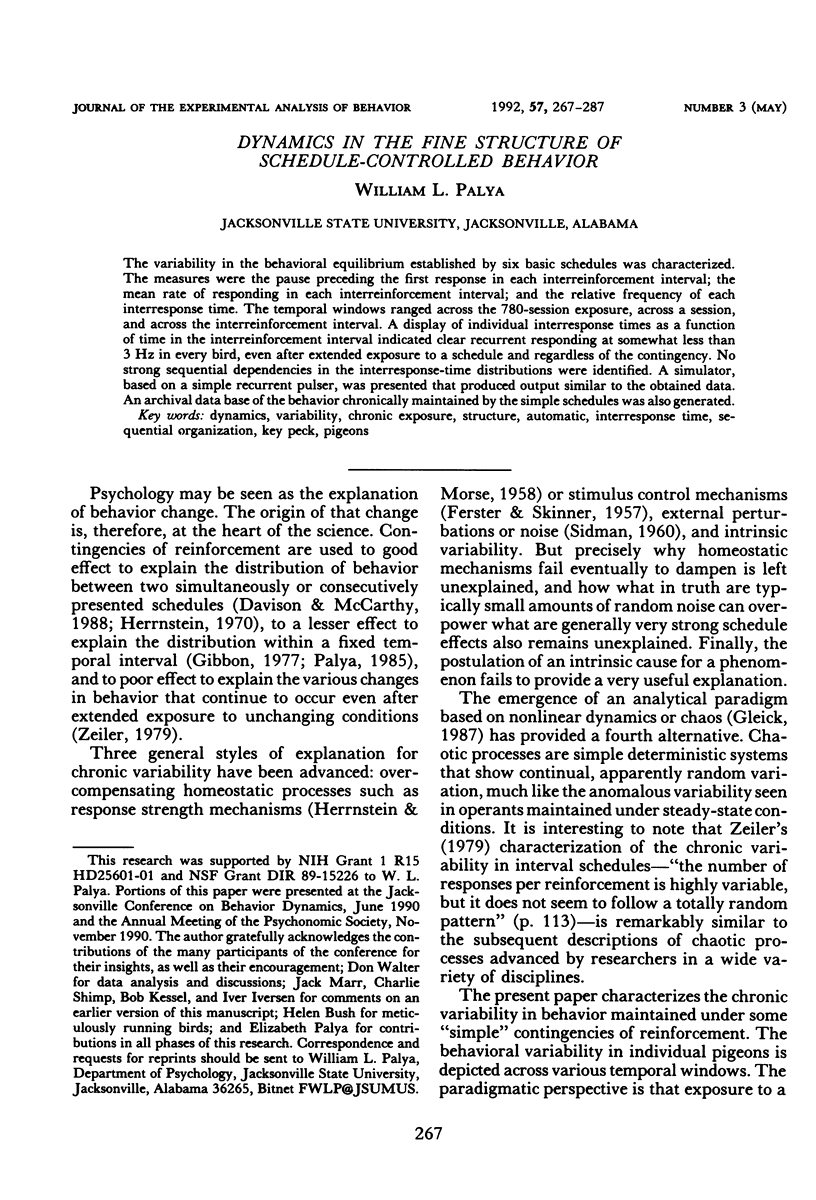
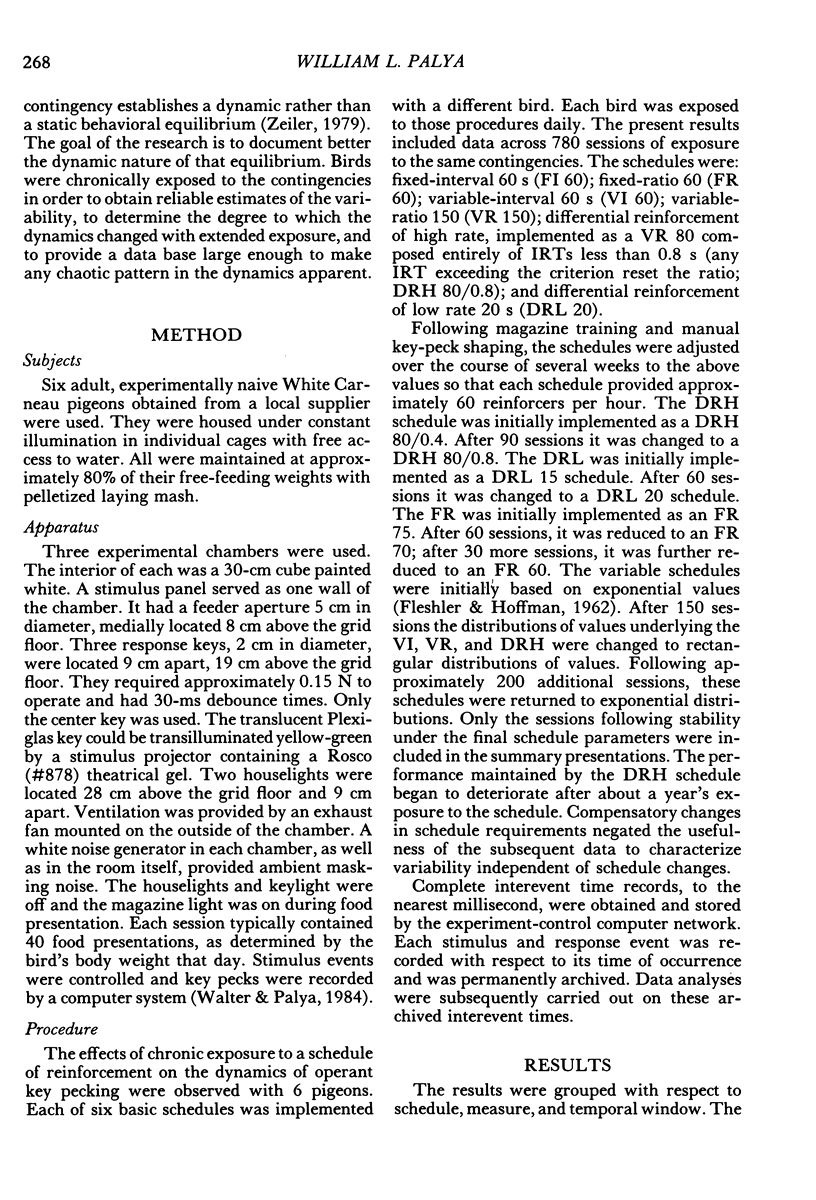
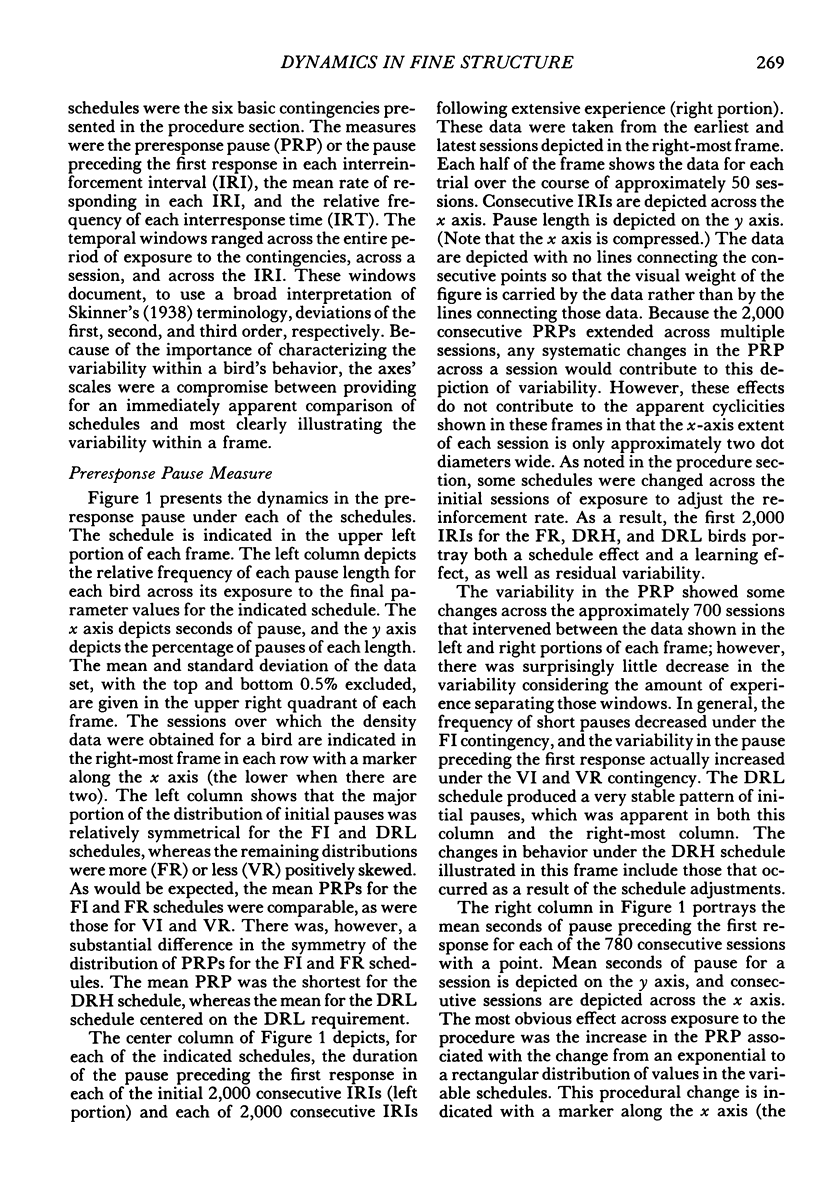
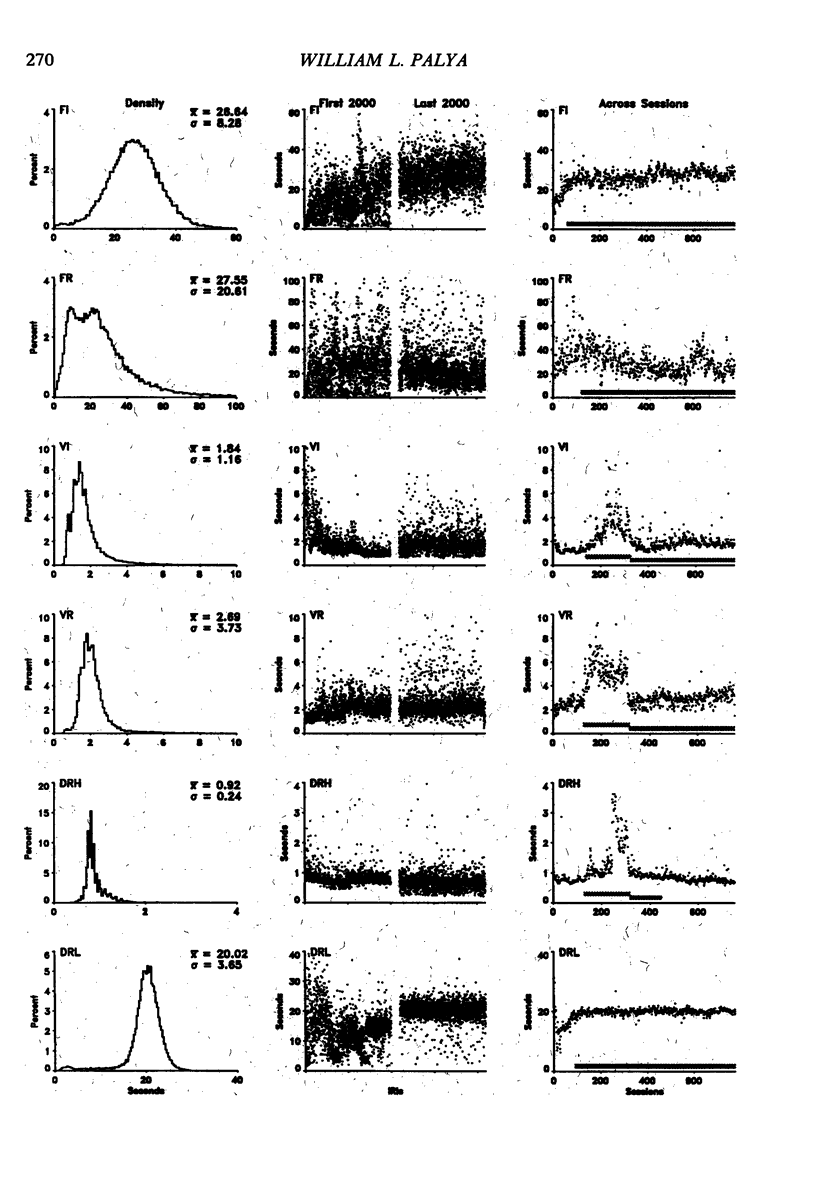
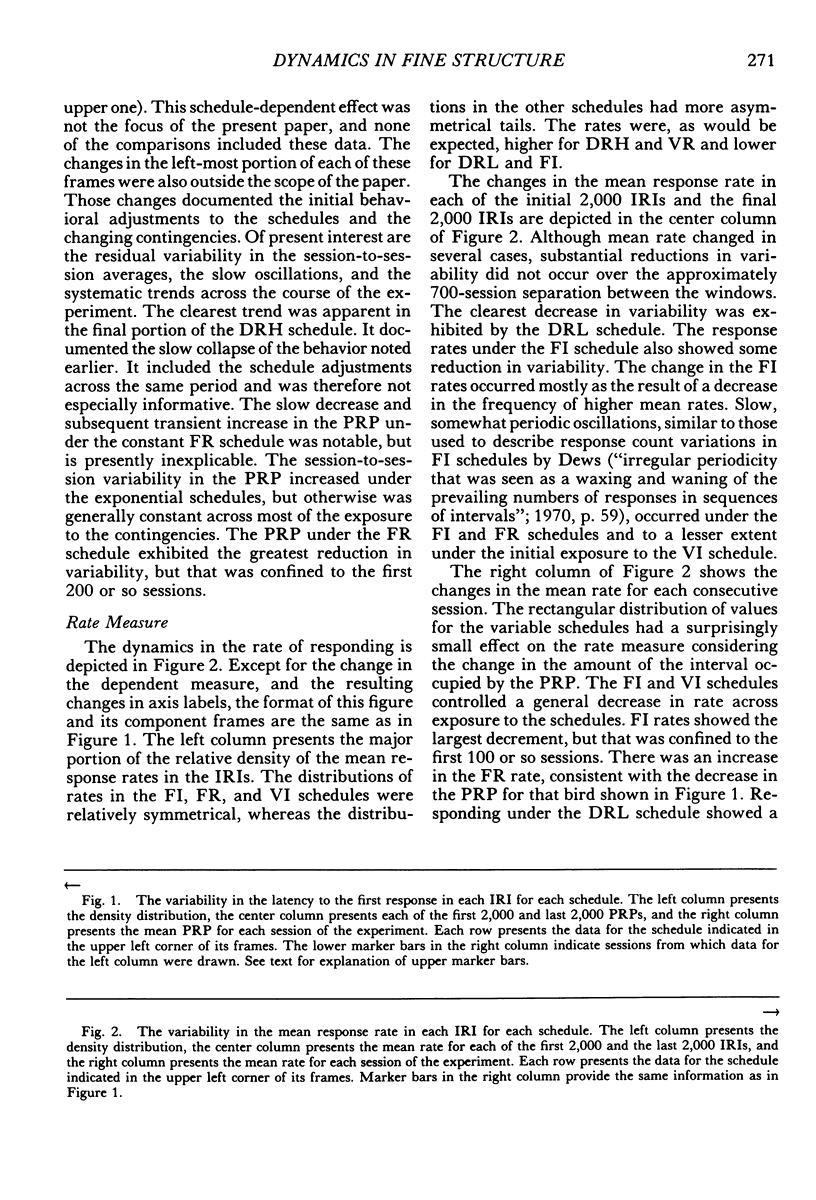
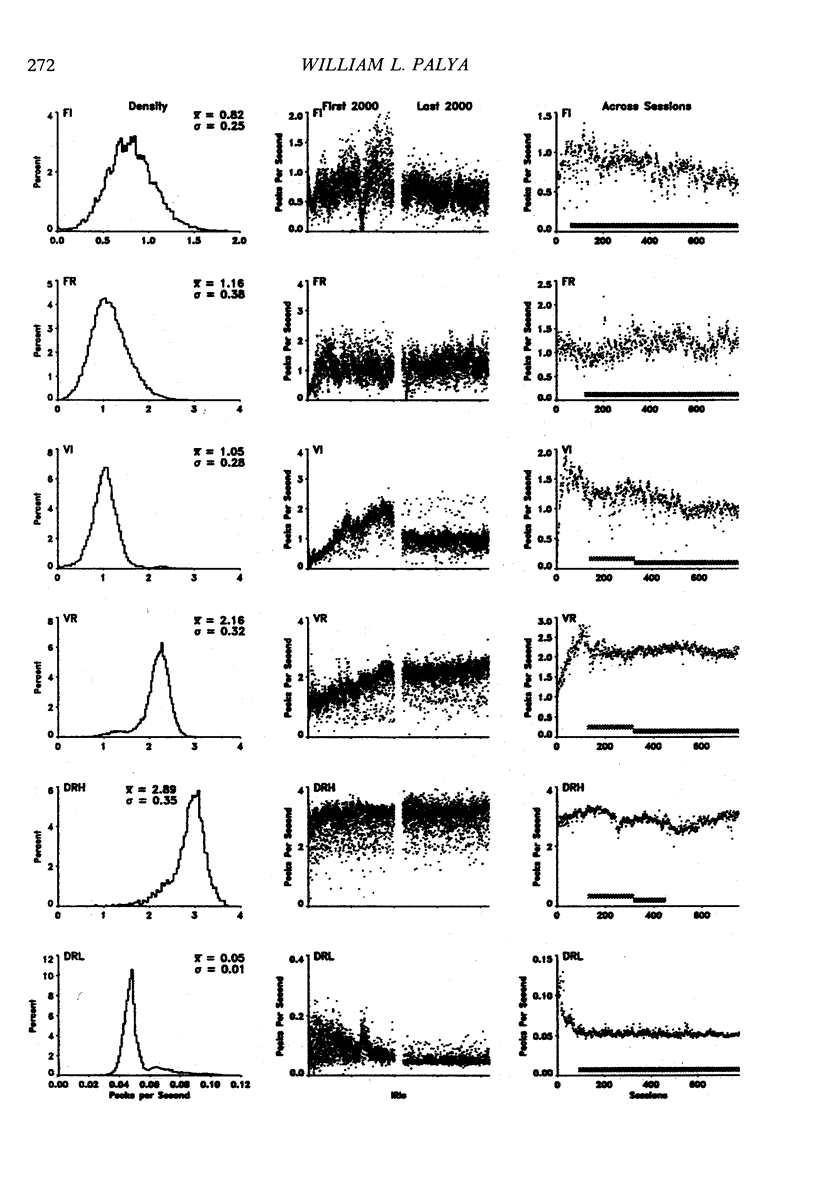
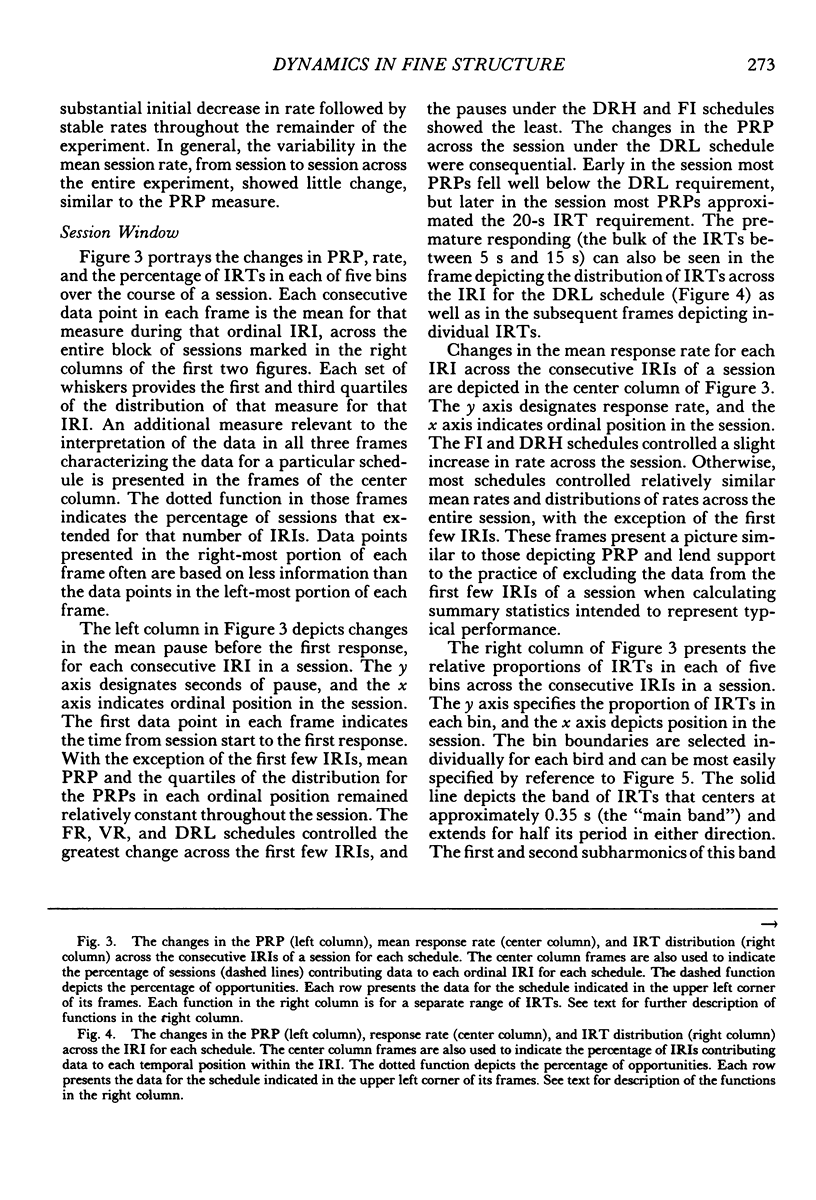
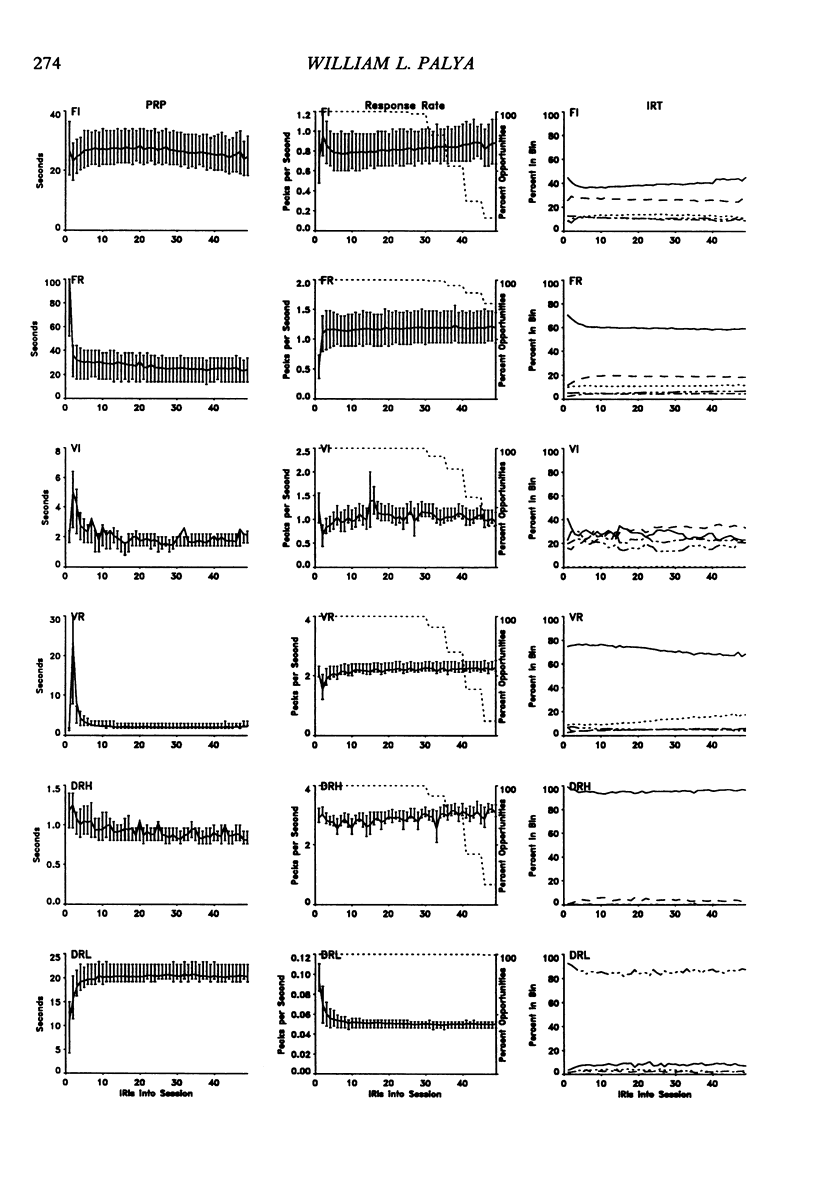
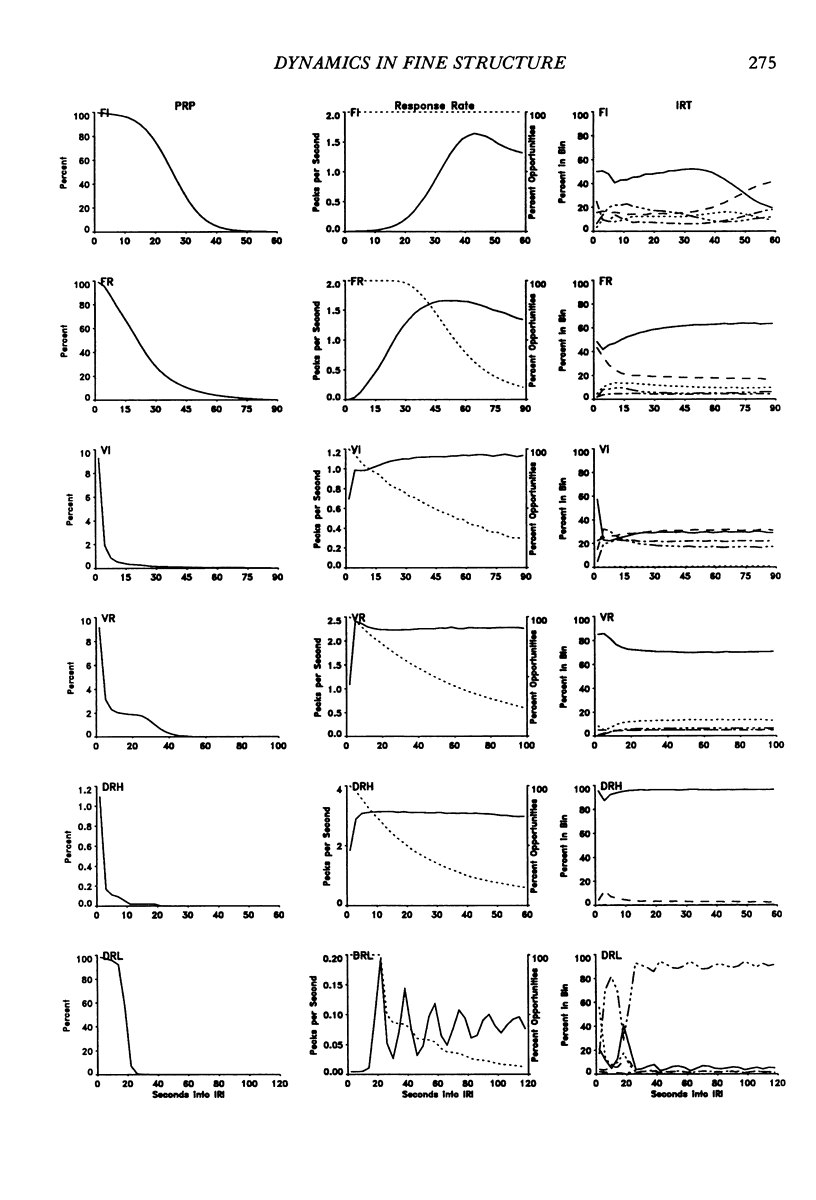
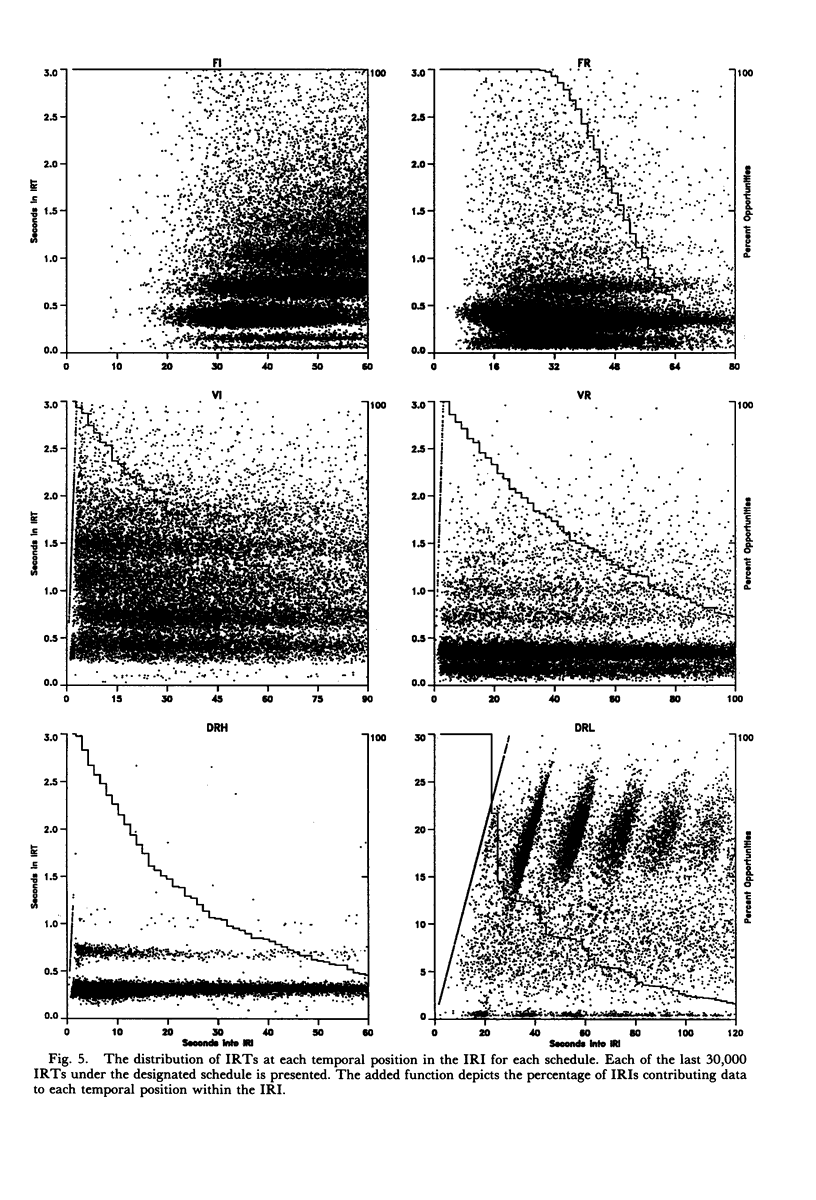
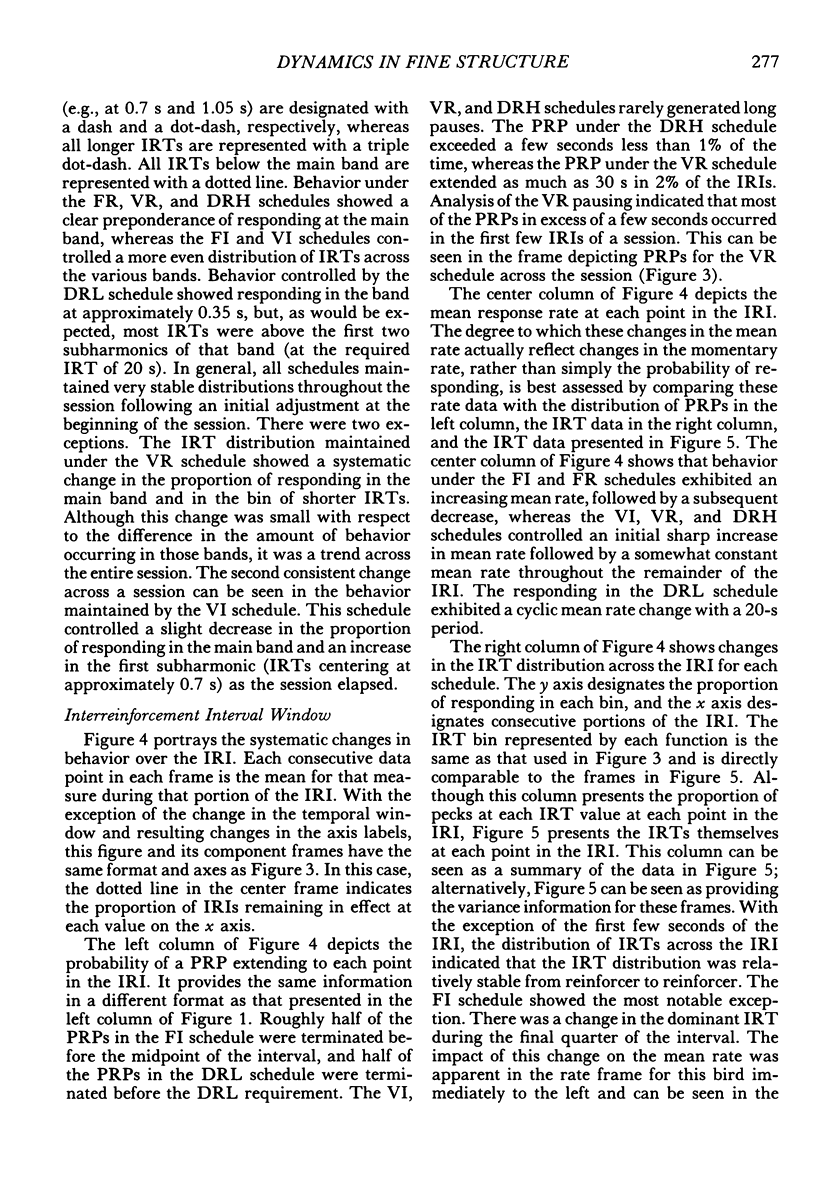
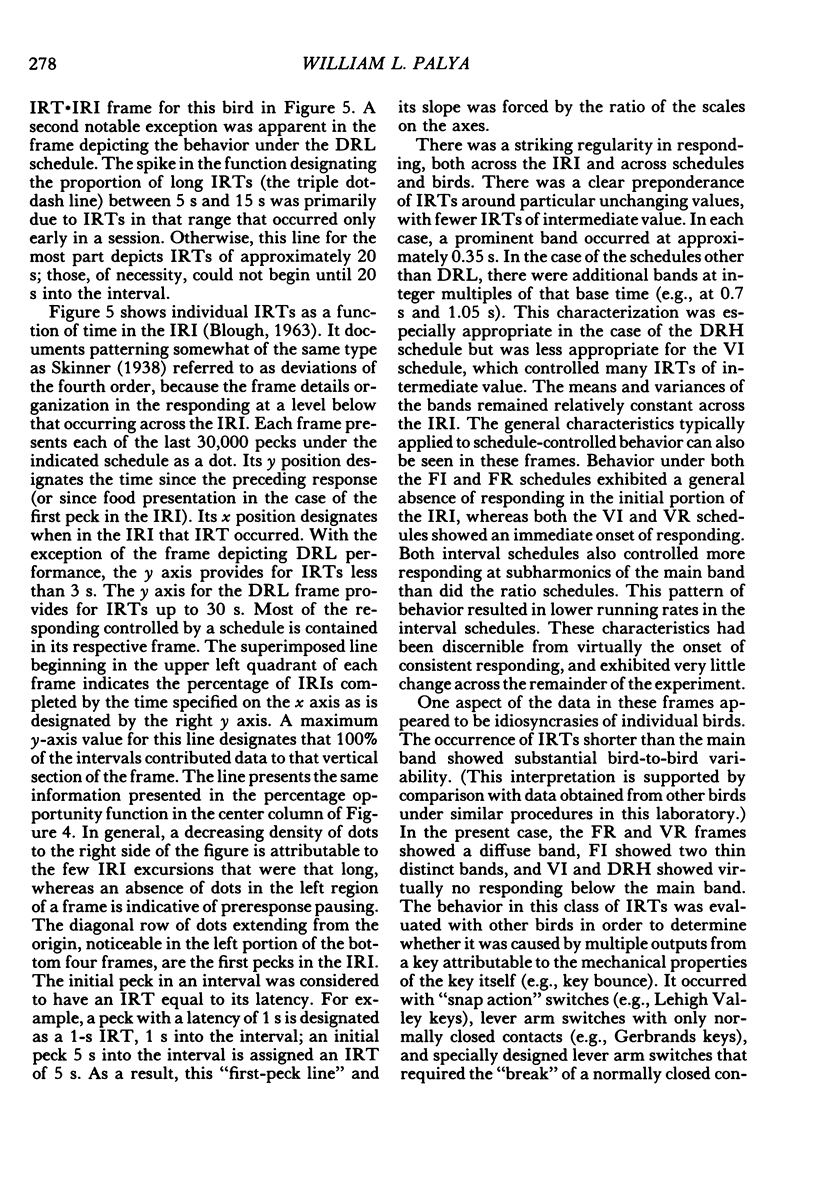
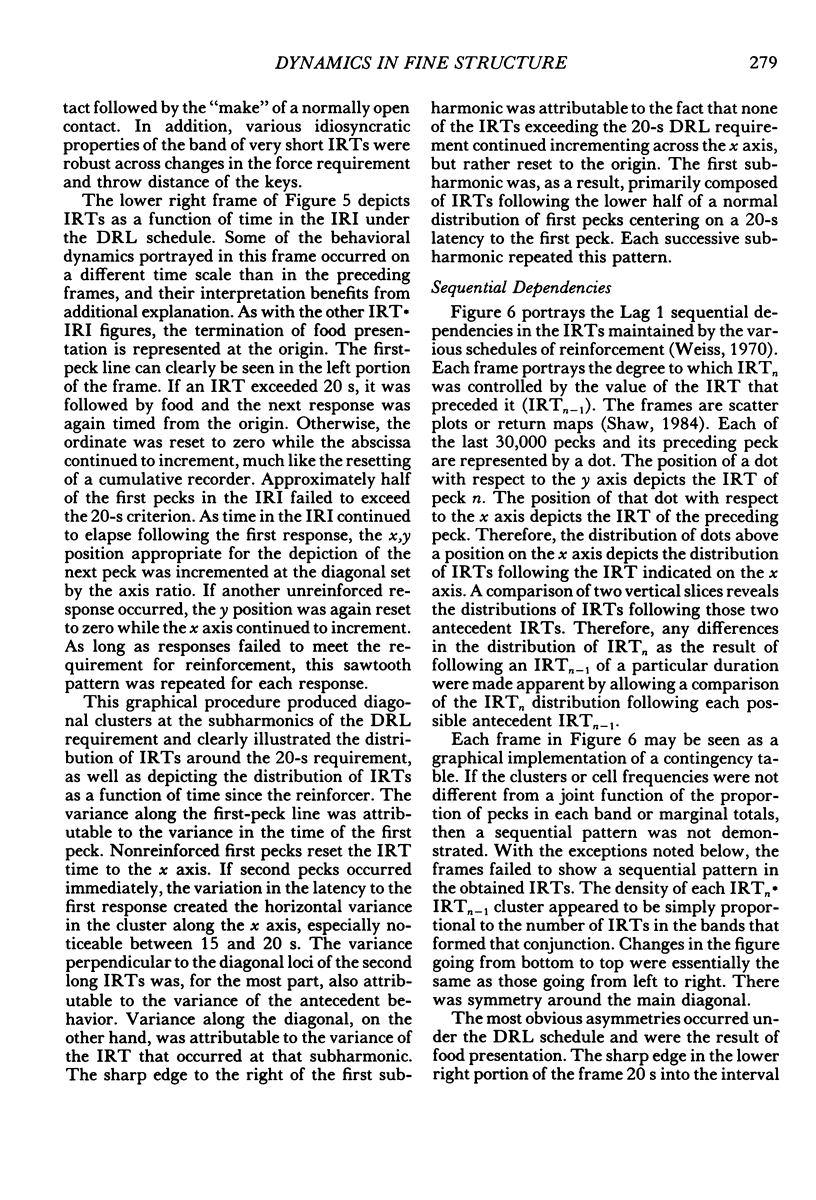
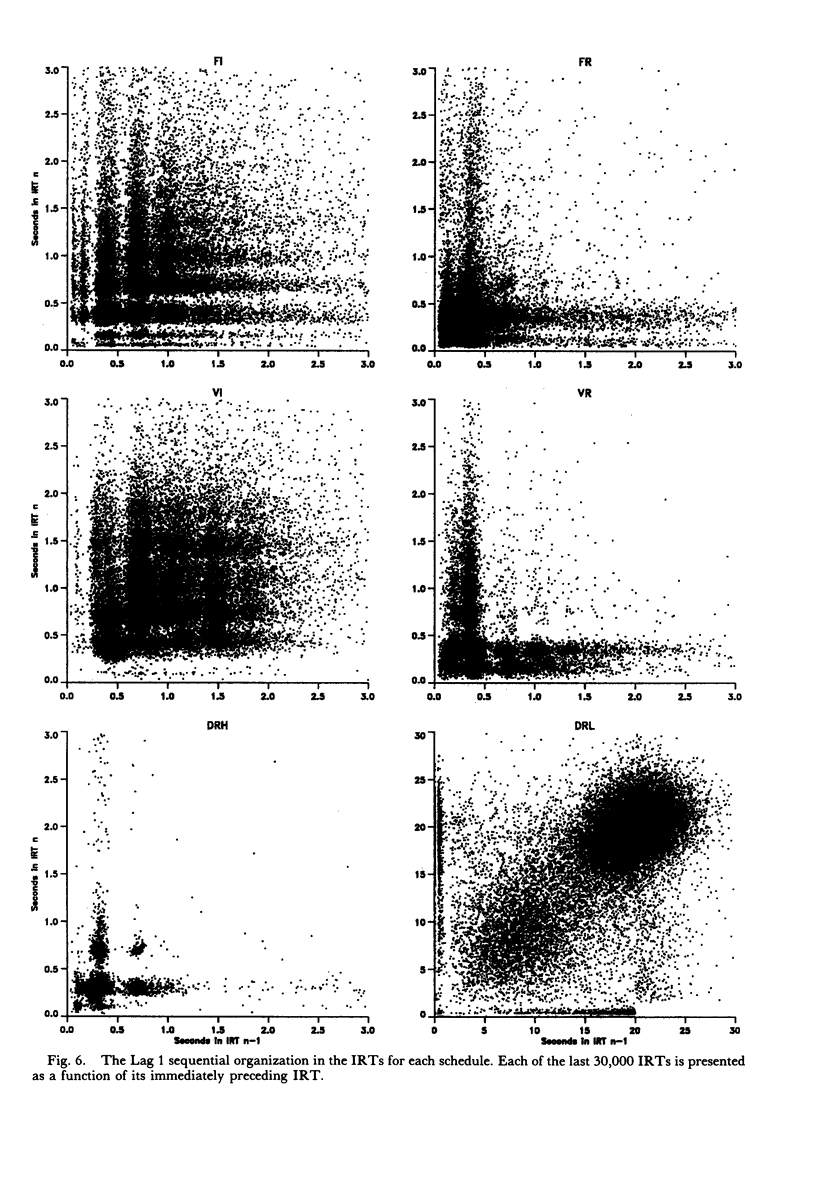
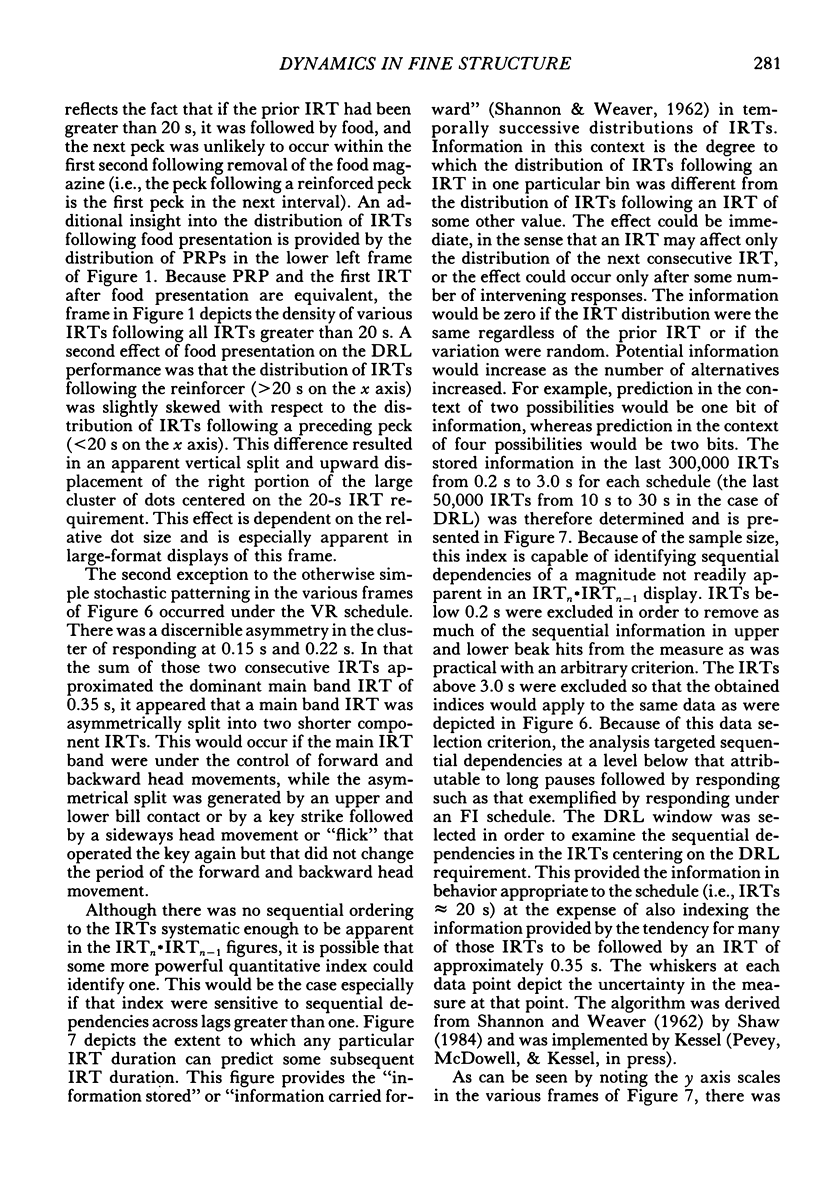
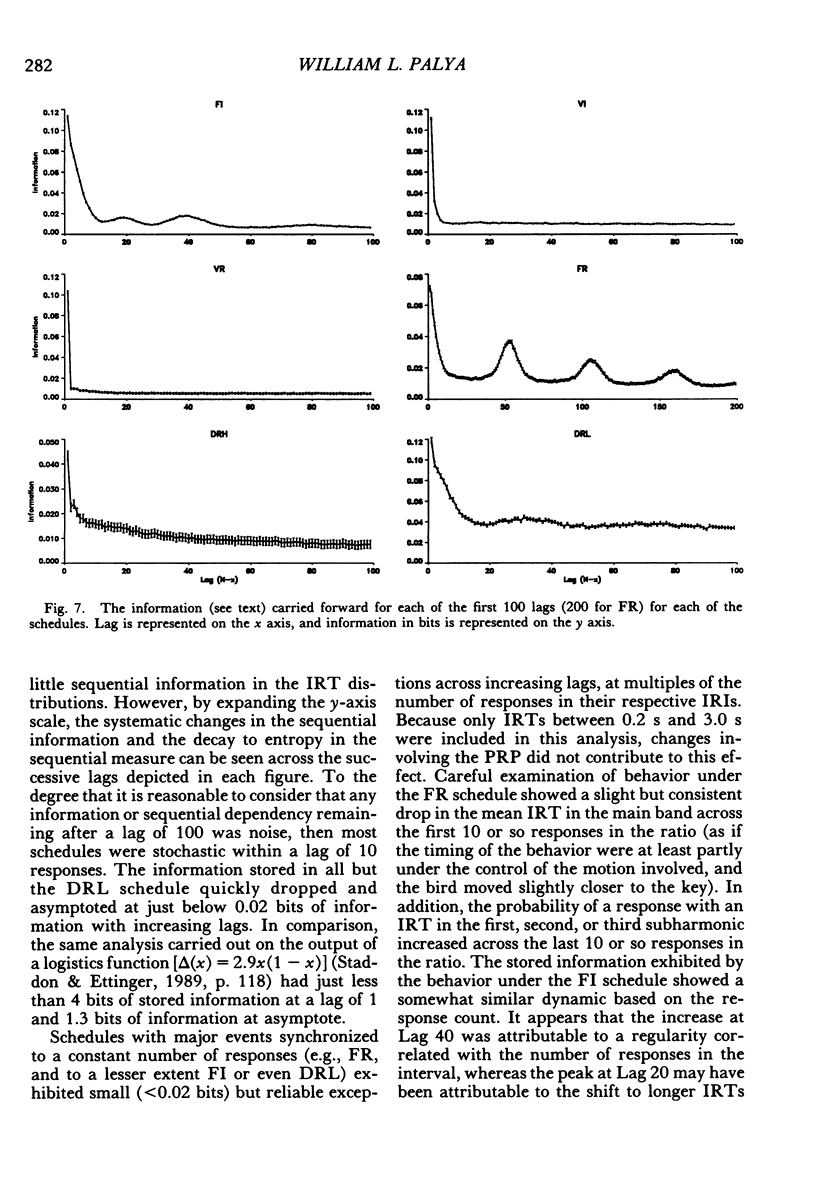
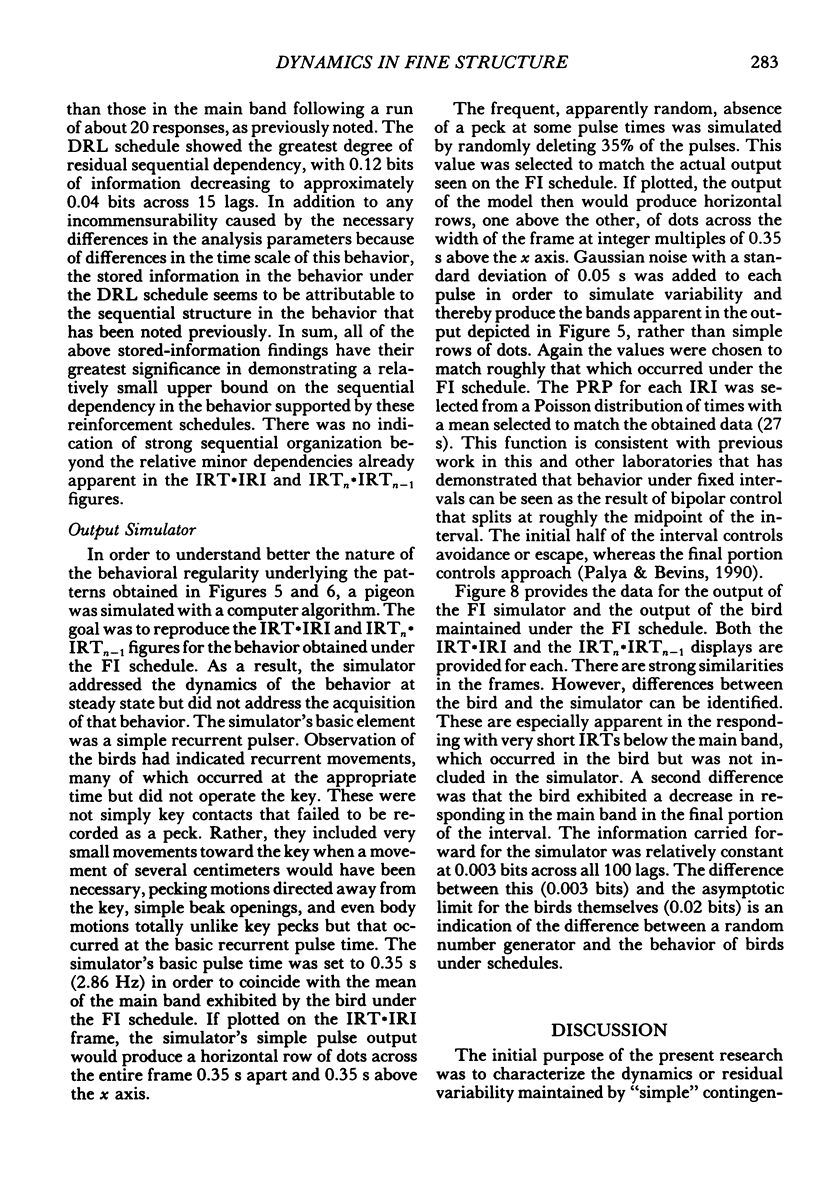
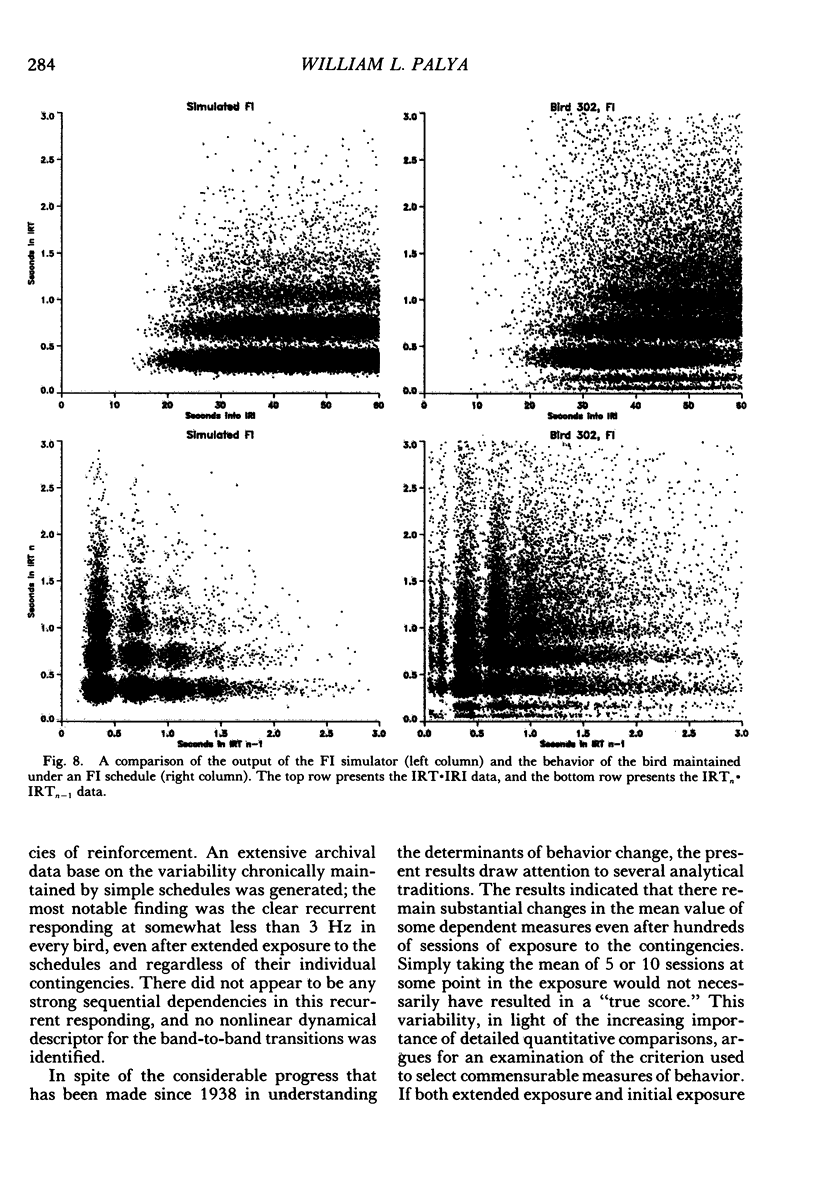
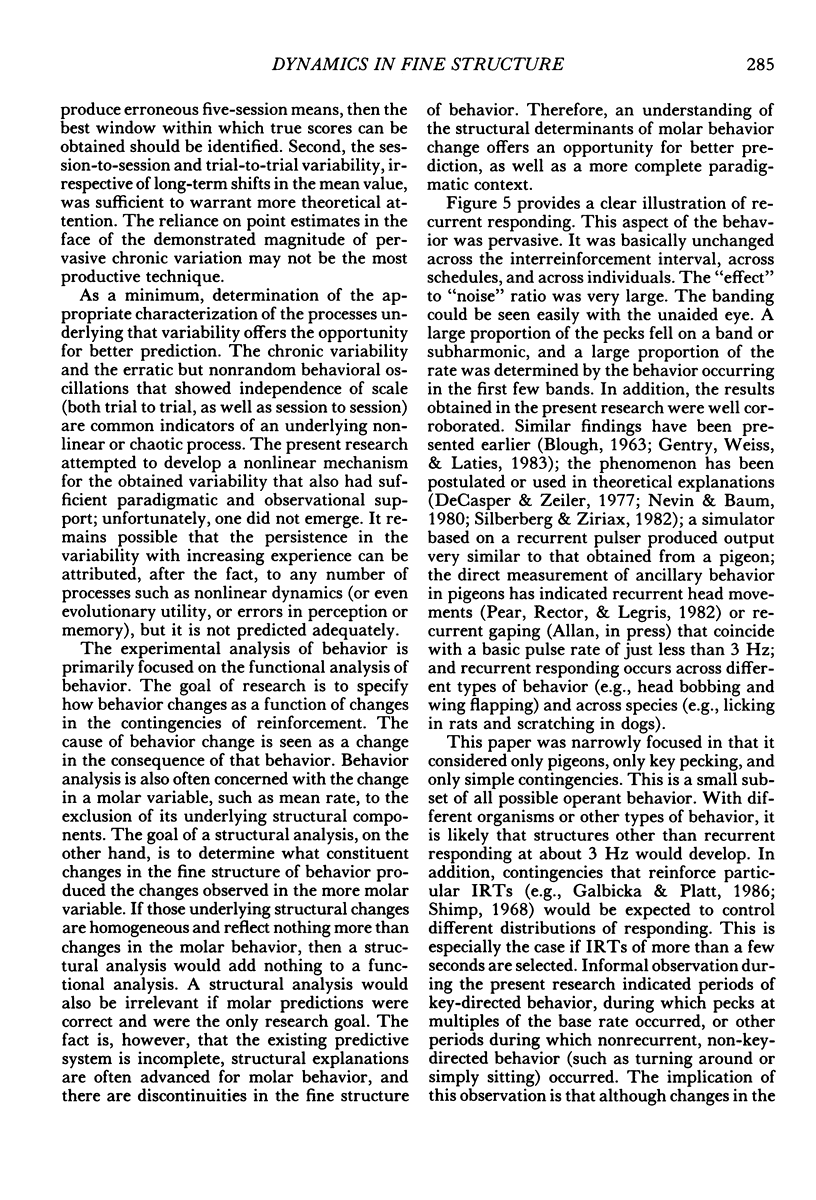
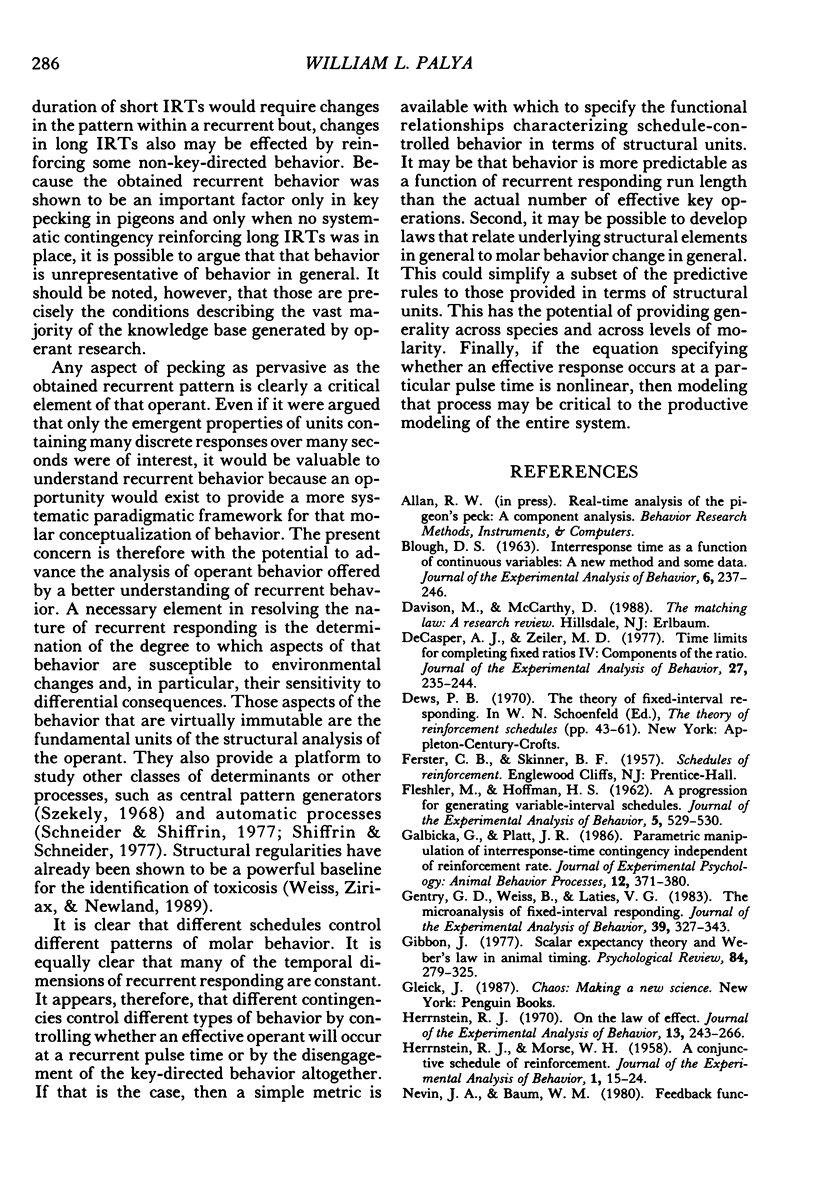
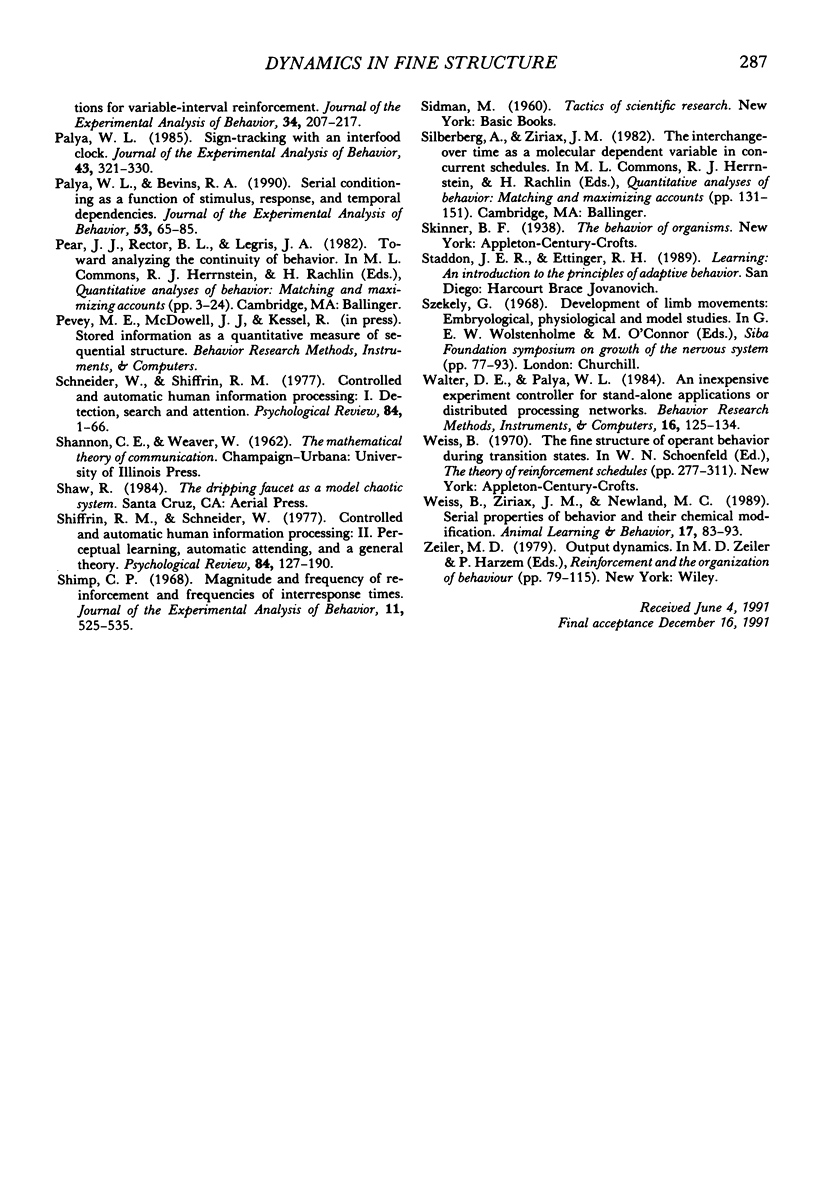
Selected References
These references are in PubMed. This may not be the complete list of references from this article.
- Blough D. S. Interresponse time as a function of continuous variables: a new method and some data. J Exp Anal Behav. 1963 Apr;6(2):237–246. doi: 10.1901/jeab.1963.6-237. [DOI] [PMC free article] [PubMed] [Google Scholar]
- Decasper A. J., Zeiler M. D. Time limits for completing fixed ratios. IV. Components of the ratio. J Exp Anal Behav. 1977 Mar;27(2):235–244. doi: 10.1901/jeab.1977.27-235. [DOI] [PMC free article] [PubMed] [Google Scholar]
- FLESHLER M., HOFFMAN H. S. A progression for generating variable-interval schedules. J Exp Anal Behav. 1962 Oct;5:529–530. doi: 10.1901/jeab.1962.5-529. [DOI] [PMC free article] [PubMed] [Google Scholar]
- Galbicka G., Platt J. R. Parametric manipulation of interresponse-time contingency independent of reinforcement rate. J Exp Psychol Anim Behav Process. 1986 Oct;12(4):371–380. [PubMed] [Google Scholar]
- Gentry G. D., Weiss B., Laties V. G. The microanalysis of fixed-interval responding. J Exp Anal Behav. 1983 Mar;39(2):327–343. doi: 10.1901/jeab.1983.39-327. [DOI] [PMC free article] [PubMed] [Google Scholar]
- HERRNSTEIN R. J., MORSE W. H. A conjunctive schedule of reinforcement. J Exp Anal Behav. 1958 Jan;1:15–24. doi: 10.1901/jeab.1958.1-15. [DOI] [PMC free article] [PubMed] [Google Scholar]
- Herrnstein R. J. On the law of effect. J Exp Anal Behav. 1970 Mar;13(2):243–266. doi: 10.1901/jeab.1970.13-243. [DOI] [PMC free article] [PubMed] [Google Scholar]
- Nevin J. A., Baum W. M. Feedback functions for variable-interval reinforcement. J Exp Anal Behav. 1980 Sep;34(2):207–217. doi: 10.1901/jeab.1980.34-207. [DOI] [PMC free article] [PubMed] [Google Scholar]
- Palya W. L., Bevins R. A. Serial conditioning as a function of stimulus, response, and temporal dependencies. J Exp Anal Behav. 1990 Jan;53(1):65–85. doi: 10.1901/jeab.1990.53-65. [DOI] [PMC free article] [PubMed] [Google Scholar]
- Palya W. L. Sign-tracking with an interfood clock. J Exp Anal Behav. 1985 May;43(3):321–330. doi: 10.1901/jeab.1985.43-321. [DOI] [PMC free article] [PubMed] [Google Scholar]
- Shimp C. P. Magnitude and frequency of reinforcement and frequencies of interresponse times. J Exp Anal Behav. 1968 Sep;11(5):525–535. doi: 10.1901/jeab.1968.11-525. [DOI] [PMC free article] [PubMed] [Google Scholar]


